The best Smart TVs to buy in 2022
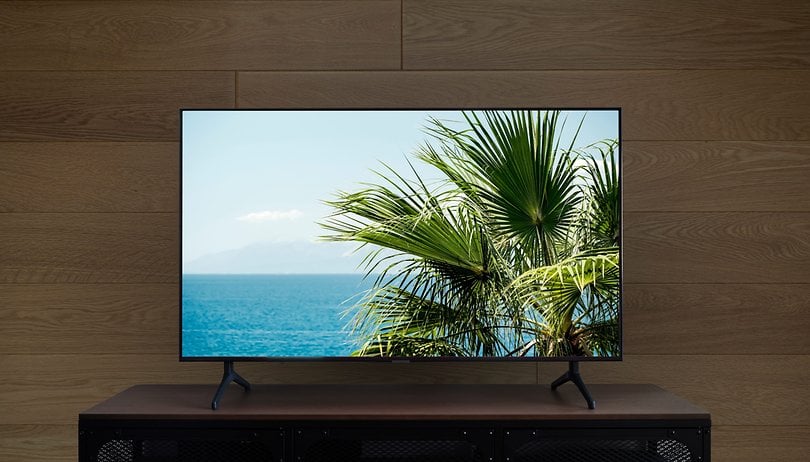

Which Smart TV to choose for your connected home? Buying tips, prices or brands, NextPit has written for you this complete buying guide to help you choose the Smart TV that suits you best.
In 2022, choosing a Smart TV can be a real headache. 55 or 85", LCD or OLED, Samsung or LG, 4K or 8K, there are so many criteria to consider. That's why we've put together this buying guide with all the information you need to know to choose your new Smart TV.
| Best smart TV | Best value-for-money | Best for those on a budget | |
|---|---|---|---|
| Product | LG OLED 65G2PUA | Sony Bravia XR65X90J | Samsung CRYSTAL UHD 55TU8000 |
| Image | 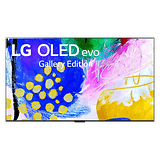 |
 |
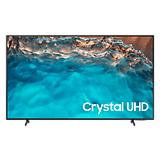 |
| Screen |
|
|
|
| Dimensions |
|
|
|
| Definition |
|
|
|
| Wired Connectivity |
|
|
|
| Wireless Connectivity |
|
|
|
| OS |
|
|
|
| Audio |
|
|
|
| Price |
|
|
|
| Offer |
We don't test Smart TVs, which implies that this article is not a selection but a buying guide based on our research and articles from specialized magazines seen on the net.
The purpose of this article is simply to show you the really important basics to know to choose the Smart TV that suits you best. So take it a bit like the advice of a geeky buddy who advises you before you go to the electronics store.
Jump to:
- What is a smart TV?
- Understanding everything about smart TV brands and ranges
- How do I choose a smart TV?
- Our recommendations
What is a smart TV?
Before getting into the heart of the matter, let's first lay the foundation: a smart TV or connected TV is a TV that can connect to the Internet to offer online services such as watching series on SVOD platforms or listening to music on streaming applications.
A smart TV has an optimized interface to make your life easier by providing you with access to several applications, which allows you to receive as well as send content that is quite unlike traditional TVs. These days, the smart TV is a complete multimedia hub that can manage all the entertainment in your home.
Understanding everything about smart TV brands and ranges
You will find dozens of different smart TVs brands on the market, where each one claims to be better than the rest. The brand that you choose will depend on things like your budget and other consumer electronic devices that you already have in your home.
Do bear in mind that it's best to avoid brands you've never heard of before. Therefore, the best brands are often the most expensive, but at least you won't end up with a TV that offers disastrous picture quality.
On the market, there are several brands to choose from, where even Chinese manufacturers such as TCL or even Xiaomi have entered the fray, and the hugely popular mainstays such as Samsung, LG, Sony, and Philips continue to keep things interesting. These brands are reliable as they have proven themselves both in terms of quality and reliability.
Understanding smart TV names
I challenge you to tell me the name of the beautiful 4K smart TV you are looking at on your way to the mall. It's almost impossible to remember the name of smart TVs because they are usually referred to by their model number. With the exception of a few models like Samsung's The Frame, smart TVs have names that comprise a series of numbers and letters.
At Samsung, each number and letter points to a specific piece of information. To illustrate this, let's take the Samsung QE55Q80AATXXC model as an example. Here is the meaning of its designation:
- The "Q" points to the display technology used which is QLED in this case.
- The "E" is the destination market which points to Europe in this case (the United States is represented by the letter "N" and Asia by an "A").
- The "55" indicates the size in inches.
- The "Q" indicates the integration of a specific technology, which is "quantum" technology here.
- The "80" is the serial number (for 8K TVs, it is a 3-digit number).
- The "A" designates the year of manufacture which is 2021 (B represents 2022).
- The "A" designates the range generation (in this case, it is 1ʳᵉ).
- The "TXXC" refers to its technical specifications such as tuner, design...
As for the rest of the manufacturers, the principle remains pretty much the same, with some variations in the choice of letters or numbers. It is clear that smart TV manufacturers should make an effort to simplify the names of their products.
The Samsung smart TV range
Samsung is the champion in the global TV market. The brand offers its own QLED technology, which it has been developing for years and is now further refining with Mini LED. In order to find your way around Samsung's vast range of products, we've classified the manufacturer's smart TVs according to their price range, i.e. entry-level, mid-range, and top-of-the-range.
Samsung's entry-level smart TVs are those equipped with UHD Crystal LED and 4K QLED screens. These include the Samsung AU8000 and Q60B. These are smart TVs with a price starting at less than $800.

When we come to the mid-range, these are the models that come with the Neo QLED 4K technology. In this category, we find the models of the Lifestyle series of Samsung as The Sero, The Frame, The Serif, as well as the Samsung Q70A, Q80A, QN85B, and QN90B. Prices start from $1,000 and can only go north from there
At the top of the range segment, we naturally find the creme de la creme from Samsung with the OLED and Mini LED 4K or 8K screens. The main models in this price range are the Samsung QN95B, S95B, QN800B, and QN900B. You will have to pay at least $2,000 to own one of these bad boys.
The LG smart TV range
Occupying the second spot in the world TV market, LG is also a South Korean giant that offers smart TVs that are of very good quality. LG is especially well-known for being the great champion of OLED technology, so much so that it even supplies its competitors such as Philips and even Samsung with OLED panels. The brand has a special interest in gamers with the impeccable support of HDMI 2.1 as well as FreeSync and G-Sync standards. We also have to mention the integration of AI ThinQ artificial intelligence in their displays.
Not to be outdone at LG, there are three main smart TV ranges that are classified by price. In the entry-level, LG offers models from the UHD LED range. These are smart TVs that offer the essentials to deliver a good viewing experience with LED backlit LCD screens and 4K resolution. In this range, we find the LG UQ7590 and UP8000PUR models with prices starting from $450 onwards for the basic models.
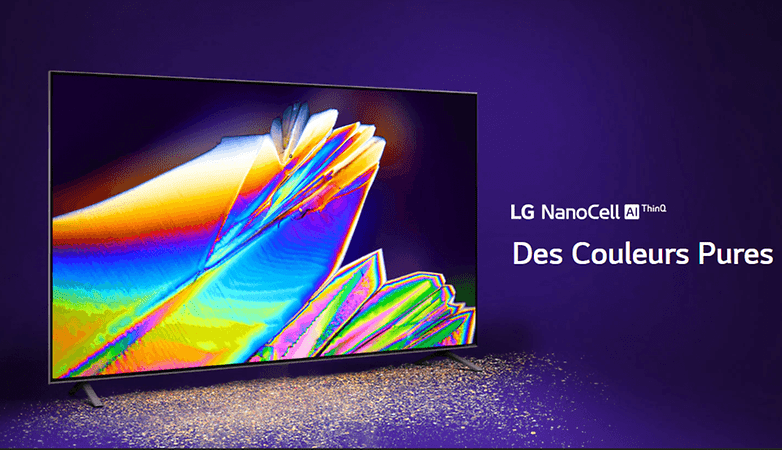
The mid-range LG NanoCell TVs are very nice smart TVs equipped with LED LCD screens but also models with Mini LED screens. Some models of this range are part of the LG QNED TV series which includes smart TVs which combine NanoCell, Quantom Dot and sometimes MiniLED technologies. The most expensive models in this range even offer 8K resolution. The main players in this category are the LG NANO75UPA, NANO80UPA, and NANO90UPA. You will most probably spend close to $1,000 for a TV within this range.
Finally, for those who want nothing but the very best, the LG OLED range is the one to watch. This range mainly includes five lines of smart TVs, namely the A, B, C, G, and Z series. There is also the Signature line which notably offers the novelty of rollable displays. You will find these under the best smart TVs that LG currently offers. The outstanding models are the LG OLED Z2 (which can run into the tens of thousands!), B2, or C1. For a nice model at a good size, be prepared to fork out anywhere from $2,000 or higher.
The Sony smart TV range
The iconic entertainment brand, Sony, is not in third place in terms of sales volume but certainly in terms of perceived value. The Japanese manufacturer has chosen to make the quality of its smart TVs its main argument. It offers premium models which are generally more expensive than its counterparts. The manufacturer's models also offer particularly good sound quality.
For smaller budgets, Sony offers models with LED LCD screens. These smart TVs have all the main elements you need to enjoy your content without being too expensive. You can look at the Sony X80K where prices start from $600 for a decent model.

In the mid-range, Sony offers its Bravia XR Full Array LED smart TV. Sony's Full Array TVs have LCD screens but provide an enhanced viewing experience with superb contrast. These are the Sony X90K, X90J, and X95J models. You should expect to pay around $1,500 for a nice model.
If your budget allows it, the A90J, X95K, X91J, and Z9J series will offer you the best in terms of a smart TV from Sony. You will find in these ranges, the best Full Array LED, Mini LED as well as OLED TVs from the manufacturer. Count on forking out at least $2,000 for a model that is worth every penny.
What are the criteria when choosing a smart TV?
Screen size and location
Before running into a store and deciding on the biggest smart TV available, you should take the time to think about it for at least a couple of seconds. Having the biggest TV possible is not always the best thing. Indeed, the "bigger is better" principle doesn't apply here because the size of your TV should be adapted based on the available size of your viewing area.
So there's no point in getting a 75" TV for your 15m² studio. On the contrary, a 32" TV in your 45m² living room will be too small if it is placed at the other end of the room. It is therefore essential to choose the right screen size for your smart TV.
To protect your eyes and enjoy a pleasant viewing experience, you should take into account the minimum distance. Without having to go too much in technical details, note that for an HD screen (1366 x 768 pixels), the viewing distance should be equal to 3 times the diagonal size. For Full HD, a minimum distance of 2.6 times the screen size is recommended. For UHD (3840 x 21,608 pixels), measure up to 1.3 times the screen size to determine the required distance.
Also, do bear in mind that the footprint increases with the screen size. Therefore, think about the space the TV will occupy before making a decision.
It is important to remember that the final location of your smart TV is an extremely important criteria because depending on the type of screen and size you choose, one location may be more ideal than another. For example, thanks to its excellent viewing angles and small footprint, an OLED TV can be mounted on a wall more easily as opposed to an LCD TV. Hence, do take into account the location of your smart TV when choosing it.
Samsung has an excellent video about recommended viewing distance for your TVs in which you will find an overview of the distances to be considered based on your screen type and size:
OLED or LCD?
In 2022, you will be able to choose between two different main screen technologies for your smart TV: LCD or OLED. An LCD screen is a screen with a panel that contains a layer of liquid crystals, whose alignment is controlled by the application of an electric current. As the crystals alone do not emit light and only modify their properties, they require an illumination layer (backlight).
- Read also: A comprehensive guide on screen technologies
For its part, the OLED screen for Organic Light-Emitting Diode or organic light-emitting diode is a screen where each point of the component is turned off (i.e. black) until an electric current is applied to it. Since each pixel of the screen can be turned off, an OLED screen offers darker tones when displaying black, unlike an LCD screen where the black is closer to gray.
To summarize the OLED vs LCD debate, I propose to give you some elements that will help you in your choice. First of all, you have to understand that as mentioned above, the main difference between these two technologies lies in the contrast. On an LCD screen, the black is artificially created while with OLED, the black hails from a turned-off pixel, which greatly affects the sharpness.
Also, the difference is in the size and design, power consumption, and viewing angles. Indeed, having fewer components, including no backlight layer, OLED screens are less heavy and take up less space. They can also be much thinner and therefore offer a more attractive design.
Regarding power consumption, OLED screens have no backlight and keep the black pixels turned off, they are less energy intensive than LCD screens. When it comes to viewing angles, once again OLED screens are ahead because they offer an almost total viewing angle, which implies that regardless of your viewing position, you will always be well placed to see vivid colors and deep contrast.

However, the purchase price is still an important criterion that tips the balance. The advantages of OLED screens mean that they are generally still more expensive than LCD screens for the same size. OLED screens can be up to twice as expensive. On the other hand, despite the evolution of OLED technology, LCD screens are still much more resistant and can therefore be a better investment for the long term.
In short, unless you really need it, choosing LCD over OLED may be a more reasonable choice. If you are looking for a smart TV to just watch TV and a few series from time to time, it is better to go for an LCD model. On the other hand, if you are an intensive user or simply demanding and especially if your budget allows it, do not hesitate to pick an OLED smart TV.
You will find on the market names such as LED, IPS LCD, QLED, QNED NANOCELL, or Mini LED being bandied all over the place. Don't panic because these are simply derivatives of the two main technologies explained above.
The resolution counts
Unless you can really afford it, there is absolutely no point in buying the latest 8K TV to watch your old movies from the 80's which are not even filmed in HD. The choice of the resolution is therefore just as important and will strongly depend on your needs.
Currently, you will be able to find smart TV Full HD (1920 x 1080 pixels), 4K UHD (3840 x 2160 pixels), or 8K (7680 x 4320 pixels) on the market. Full HD is becoming increasingly rare and is now only present on older models or on sale. This definition is often found on medium-sized TVs that are around 40" in size.
Full HD has been fully replaced by 4K or UHD. Adapted to large screens, this definition displays really sharp images, almost perfect details and guarantees an incredible immersion level. Moreover, thanks to upscaling, which is a type of image enhancement technology, watching your HD or FHD content on a 4K screen will be a real pleasure. Note however that the name 4K is wrong and that it is in fact UHD because the real 4K definition is reserved for the cinema.
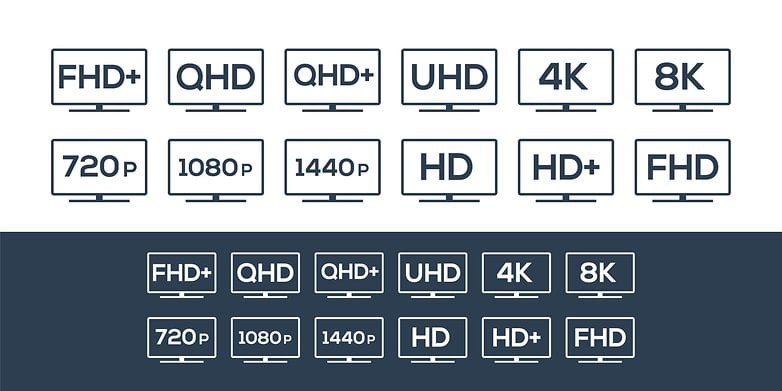
You can buy an 8K TV today, but in reality, it won't really be useful because there's almost no content available yet. 8K TVs are becoming more and more popular on the market, but for now, they only serve as a technological showcase for manufacturers. Here too, you can already enjoy "a little" of this image quality thanks to upscaling.
What about HDR?
In a few words, HDR for High Dynamic Range is a technology that improves the quality of pixels that make up an image by accentuating their brightness and colors. A HDR TV displays colors with a natural rendering, more vibrant, and with better contrast. HDR extends the brightness differences between the darkest and lightest points of an image.
HDR compatibility can be an asset but is not essential because again, it depends on the content. There is no point in having an HDR smart TV if you don't have access to this type of content.
HDR10, Dolby Vision, HDR10+: A brief explanation
If you see the words HDR10, Dolby Vision, or HDR10+ on the specifications of your future smart TV, you should know that these are simply technologies that allow you to enjoy a better image quality.
HDR 10 is a standard based on an open platform. It uses a 10-bit color quantization scale, hence the name HDR 10. Each TV manufacturer that uses it can implement it as it wishes. It is the HDR standard chosen by the UHD Alliance for the awarding of the Ultra HD Premium label and the calibration of films marketed on UHD Blu-ray media.
HDR 10+ is an evolution of HDR 10 that was designed to meet Dolby Vision and uses dynamic metadata embedded in the video stream to make it easier for consumers to see the difference. It leverages dynamic metadata embedded in the video stream so that the compatible transmitter can optimize the display, scene by scene. It is an open standard supported by 20th Century Fox, Panasonic Corporation, and Samsung, among others.
As for Dolby Vision, it is an HDR technology developed by and remains specific to Dolby to go further than HDR 10. It offers a quantization on 12 bits and requires compatibility on reading devices and work broadcasts.
In 2022, do I settle for 4K or 8K?
For the moment, I recommend that you remain with 4K and wait a few more years for 8K to become more mainstream and for there to be enough content. Moreover, 8K is only worth it on very large screens for which you have to pay a lot of money. So invest your money in a good 4K TV with accessories such as a good sound system.
Wired connectivity
As much as it is important to pay attention to the screen size or screen technology, you should also pay special attention to the connectivity options found in your smart TV. Nowadays, a smart TV is a real multimedia hub, centralizing most of our entertainment devices.
Depending on your devices, you will have to make sure that you can connect your TV box, game console, computer, sound bar, Blu-ray player, etc. It is therefore important to choose a model with enough ports to be able to connect all your devices.

Make sure your smart TV has at least 2 or 3 HDMI ports including an HDMI 2.0 port to play 4K content or even better, HDMI 2.1 to play 4K content at 120 Hz or 8K. It should also have at least one USB port and an optical output. If you are using older devices, you will also need analog inputs (white, yellow, and red RCA plugs). The presence of a headphone jack can also be a plus.
Wireless connectivity
The very reason for the existence of a smart TV is to be able to connect to the internet. These days, virtually all smart TVs can access the Internet via an Ethernet cable or Wi-Fi. The latest models logically support the latest standards and will therefore offer the best speeds. Wi-Fi Direct will allow you to connect directly to another device.
Depending on your needs, you will also have to pay attention to the integration of software features such as Screen Mirroring which allows you to duplicate the screen of your smartphone on the smart TV. The integration of AirPlay is also a significant asset for any home.
Bluetooth is also a must-have feature to connect accessories such as headphones or a wireless keyboard.
User interface
As the primary entertainment hub of your home, a smart TV must offer a smooth and pleasant user experience. In 2022, there are three main OS for smart TVs that are currently on the market.
Formerly known as Android TV, Google TV is the most popular smart TV OS. The search giant's interface is simple, intuitive and enriched by Google services. If you use an Android smartphone, you won't be too confused. Thanks to the integration of the Google Play Store, you'll have a wide choice of applications. This interface is offered on Philips, Sony and TCL TVs.
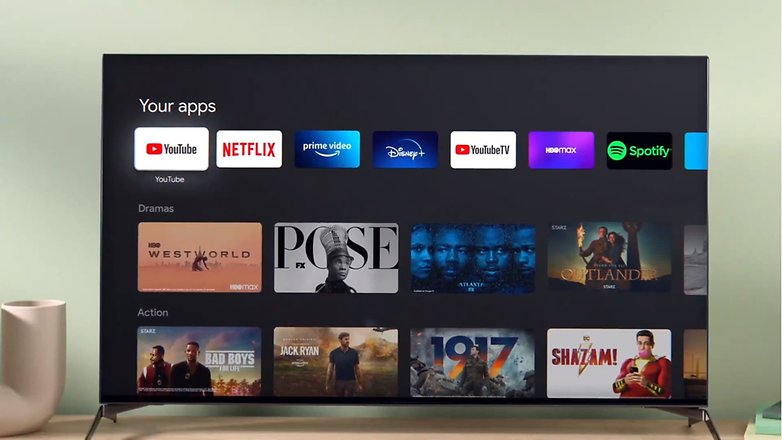
On the other hand, Samsung offers its own OS called Tizen. Tizen also offers a user-friendly interface and a full catalog of applications. The OS is based on Linux. Users of Samsung products will enjoy a nice integration of smart TVs running Tizen in the ecosystem of the South Korean brand. As you may have guessed, Tizen is exclusive to Samsung smart TVs.
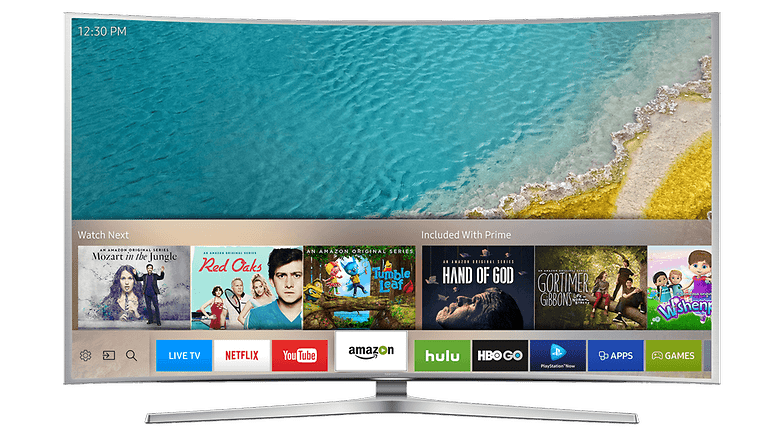
The third major OS is WebOS from LG. The South Korean manufacturer has managed to create a complete and efficient user interface with everything you need at your fingertips. Although it has a less rich catalog of applications, WebOS remains just as pleasant to use as the other OS. Again, you will need an LG smart TV to enjoy the benefits of WebOS.
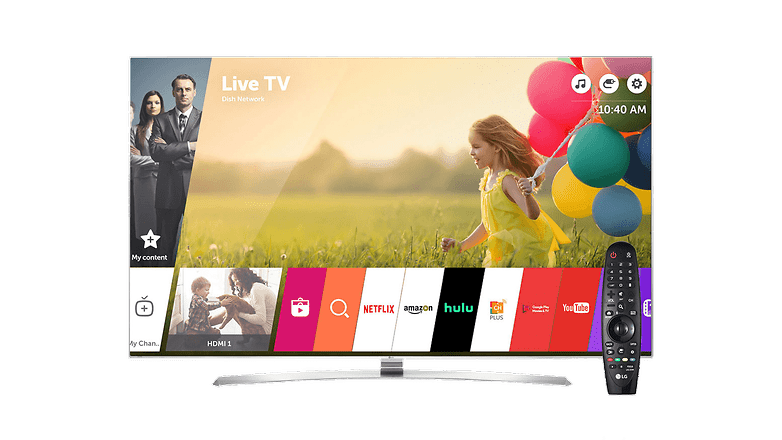
In case the user interface of your smart TV does not suit you, you can get a smart TV box to benefit from the Google TV interface. For this, there are products such as the Google Chromecast or the Xiaomi Mi Box and Nvidia Shield TV.
Remote controls, voice commands, virtual keyboards
Most smart TVs are sold today with at least one remote control. This allows you to interact with the smart TV in order to navigate the interface or select your content. Remote controls have evolved along with smart TVs and today there are more or less ergonomic models that include a microphone, a touchpad, or gesture control support. Some smart TV models even allow you to use your smartphone as a remote control.
In addition to the remote control, you can also control your smart TV using your voice. Built into the majority of current smart TVs, voice recognition allows you to easily search for content by using a microphone that is normally located on the remote or the TV itself. Thanks to voice assistants like Google Assistant or Siri, you can issue a voice command to watch a movie, a series, or listen to a particular music album.
Sound quality
The time is long gone when TVs were very thick and had speakers that could be used at a party. Due to an ever slimmer design, today's smart TVs can no longer integrate large and powerful speakers. While some models offer built-in sound bars to counter this problem, most cases would see you rely on an external sound system for the best experience.
In terms of sound, the main technologies to be aware of are Dolby Digital, Surround, and Atmos, as well as DTS .
Dolby's audio formats are guaranteed to offer high-quality audio, enhancing the sound experience with your smart TV. Dolby Surround uses three separate channels: a rear mono channel and two front channels to lateralize the soundtrack. Dolby Digital produces digital sound with up to 6 distinct channels: left, center, right, rear left and rear right, plus a special channel dedicated to bass effects. As for Dolby Atmos, it is a format capable of managing up to 64 channels with the particular capability of offering vertical sound spatialization.
Over at DTS, a competitor of Dolby's, we mainly find the DTS-HD Master Audio and DTS:X formats. DTS-HD Master Audio supports up to 7.1 channels and mainly improves the audio quality. DTS:X is DTS' answer to Dolby Atmos. It can support up to 32 channels, requires a compatible amplifier that is capable of decoding tracks, and also offers vertical spatialization of sound.
If you don't already own one, you'll need to plan on purchasing a sound bar or a good pair of headphones to fully enjoy the sound quality of your content.
Price
The price of smart TVs varies greatly depending on the brand, size and screen technology. It is therefore difficult to give you a clear recommendation on price.
Entry-level models cost less than $1,000 or even less than $500 in some instances. When you fork out anywhere between $1,000 and $1,500, you would have a good mid-range model. Those with deeper pockets who want a high-end smart TV should expect to pay at least $1,500.
I would advise you to check how much you can afford to spend on your smart TV and to see which of the options that fit your budget offers the best compromise with all the criteria proposed in this buying guide.
To give you a better idea, if you have the choice between a large, inexpensive TV and a smaller but better-equipped model, you should choose quality over screen size.
The best smart TVs to choose in 2022
The best smart TV to choose in 2022: LG OLED65G2PUA
The LG OLED G2 is LG's best candidate in terms of the smart TV. We chose it in its 65-inch version as the best smart TV to select in 2022. This model has an OLED Evo screen with the latest generation Alpha9 processor as well as the highly anticipated gaming features which can be found in this category.

The LG OLED65G2PUA promises exceptional image quality but above all, near-perfect brightness. Equipped with LG's "Gallery" design, this TV was designed to be placed on a wall as it is delivered without a stand. You'll find all the technical specifications you'd expect from a high-end smart TV, such as the latest video codecs and a connector system that includes the latest technologies. Gaming fans will be delighted but the TV's audio quality is a little bit disappointing.
In summary, the LG OLED65G2 is a high-end smart TV that offers one of the best image quality on the market and impressive brightness levels. Its technical specifications check all the boxes and will satisfy demanding users who want the best. The LG OLED65G2PUA is available for the recommended retail price of $2,199 on the manufacturer's website as well as from third party retailers.
Best value-for-money: Sony Bravia XR-65X90J
Sony is known for offering more expensive smart TVs compared to its competitors, but its Bravia XR-65X90J is a pleasant surprise thanks to its very interesting price-to-performance ratio. This affordable smart TV from Sony is distinguished by its beautiful image quality obtained thanks to its LCD panel integrating the Full Array technology and the Sony Cognitive Processor XR.
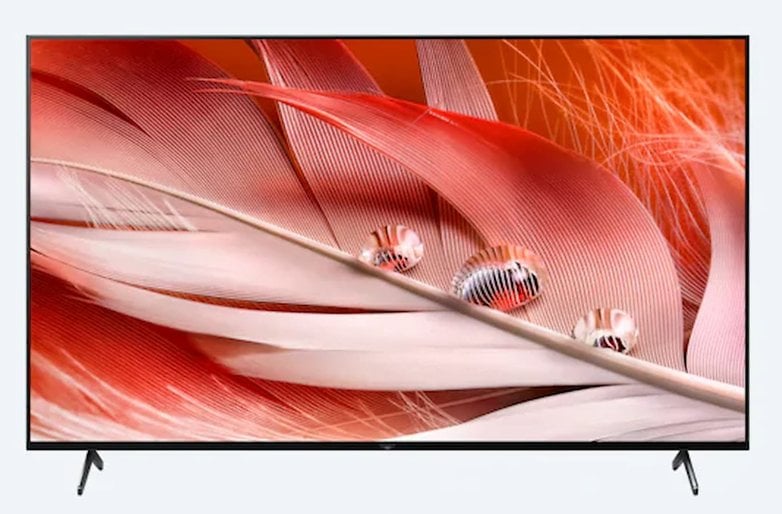
The Sony Bravia XR-65X90J displays sharp images with a nice color fidelity. It is a well-designed smart TV but is a little bulky, especially when you take the length of its feet into consideration. Thankfully, it can also be fitted at the center. Youe eyes will enjoy a good contrast ratio, a contained input lag and a pleasant ergonomics thanks to Google TV. In terms of audio, DTS support allows decent quality enjoyment without having to purchase a separate sound bar.
The Sony Bravia XR-65X90J is a smart TV for those who want more than just a TV to watch movies but don't want to spend too much money, either. It is currently available for $1,499 on the Sony website or from third party retailers.
The best cheap smart TV: Samsung CRYSTAL UHD 55TU8000
If you're looking for a good quality but not too expensive smart TV, the Samsung CRYSTAL UHD 55TU8000 might be right up your alley. We recommend this 55-inch model as an entry-level smart TV. It has the advantage of offering the latest Samsung technologies at a great price.

Samsung's promise with its CRYSTAL UHD 55TU8000 is to offer good image quality with vivid and natural colors thanks to Dynamic Crystal Color technology. The 4K Crystal Processor ensures good management of contrast and brightness levels, complemented by support for HDR. Gaming enthusiasts will also be delighted to enjoy the Auto Low Latency Mode that allows the TV to become more responsive and thus offer a great gaming experience.
The Samsung CRYSTAL UHD 55TU8000 is an interesting and affordable smart TV that will undoubtedly please less demanding users. Its sound quality and its thinness will allow you to enjoy your content in a rather appreciable comfort for its price at a mere $499.
So much for this buying guide showing how to choose the best smart TV in 2022 according to your needs. This article has simply explained the primary elements to consider when choosing a smart TV. Now it's up to you to take stock and see what's really important to you in order to make the right choice.
Did you find this buying guide useful? Were you able to choose your smart TV? Don't hesitate to ask your questions in the comments!
This best list was revised in November 2022. Existing comments were maintained.







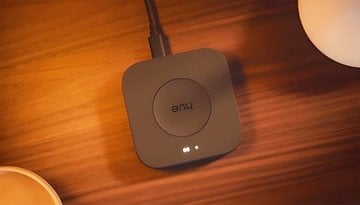
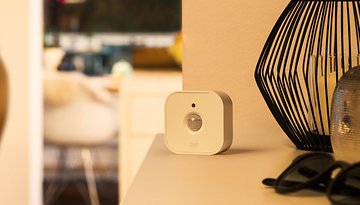
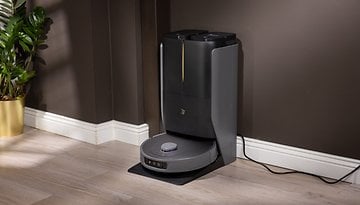
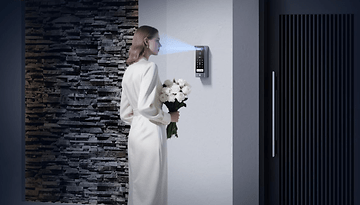
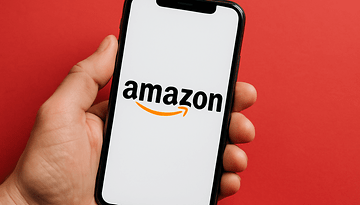

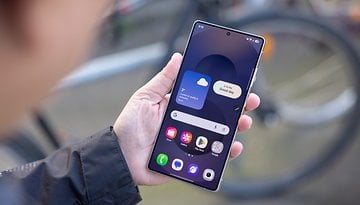


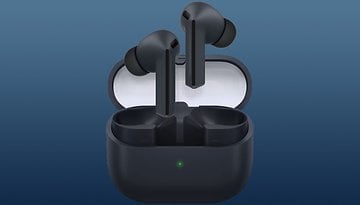



You neglected the privacy category, especially for those supporting voice commands. Yes, privacy is app dependent, but many include voice for their own integrated functions too, usually with internet support and data collection.
Also DLNA, Plex and other home server integration compatibility would be important features.